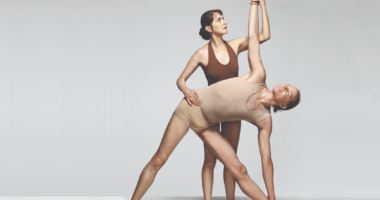Yoga Nidra (Yoga Sleep) is a practice which is a meditative state of consciousness designed to facilitate deeper levels of meditation. It is a combination of techniques called as Yoga Nidra, where the practitioner becomes aware of the subtle levels of consciousness where the mind and body slow down. Through Yoga Nidra, you can experience a deep state of relaxation, which helps in decreasing stress, and in turn you are able to achieve deep levels of rest and rejuvenation.
Yogic or Yogic Sleep is a state of deep awareness. It is a very relaxed but alert state of relaxation where you are completely awake and yet totally relaxed. In this state, you will be able to quickly release stress and anxiety as well as induce deep meditation. It is a very interesting state to be in, feeling deep sleep at the same time you are conscious and alert.
Yoga has been around for thousands of years, and the practice has evolved considerably through the centuries. From the ancient Ashtanga method, to the modern Hatha, Kundalini, and restorative yoga, the practice remains popular and well documented. It is important to note that the purpose of yoga is not necessarily to become a better yoga practitioner, but more to discover the inner self and its connection to the divine. In this way, it is different from many other spiritual practices that aim to help one achieve greater self-understanding and personal growth. Yoga Nidra (Yoga Sleep) is a state of deep relaxation and rest that can be achieved through various methods. Some of the most common practices are:
Yoga Nidra is a practice that may lead you to the next level, allowing you to have a relaxed body, a flexible mind, and enhanced intuition.
Yoga Nidra, also known as yogic sleep, is a five-step procedure that starts with a physical body scan. It includes breath meditation, emotional state balance, visualization, and self-healing. Another essential stage is to set a good intention (called a sankalpa), which provides the participant a particular goal for the session.
The Benefits and Depths of Yoga Nidra
We let our consciousness roam over the whole body during Yoga Nidra. We transition between the waking state, dream state, and ultimately profound, dreamless sleep while doing so, just as we do when we sleep.
It promotes profound relaxation, mental calm, and increased awareness. Yoga Nidra, according to Swami Rama, is a practice of self-mastery of the autonomic nerve system. The method is simple to use and understand.
By harmonizing the right and left hemispheres of the brain and activating the subtle energies of our vital force, the prana, relaxation techniques and pratyahara are utilized to prepare the mind and body for Yoga Nidra.
Yoga Nidra is claimed to be as restorative as 3 hours of sleep in 45 minutes. What exactly does this imply? We can improve the immunological and metabolic systems’ performance by getting enough sleep. As a result, our entire physical health improves, and we have more energy and fewer colds and illnesses of all kinds. Rest also benefits mental health by reducing brain fog, insomnia, anxiety attacks, post-traumatic stress disorder, and depression.
Breaking Down Yoga Nidra: The Basic Stages for All Levels
Technique for Preliminary Relaxation
Simple breathing exercises are used to relieve stress and stimulate the neurological system to activate the parasympathetic nervous system.
Putting Together a Sankalpa (Intention or Resolve)
This aim is a characteristic or trait that we want to develop and/or embody in any aspect of our lives. Someone may want to express fearlessness, bravery, inner serenity, or fulfillment, for example.
Stage 1: Awareness Rotation Through the Body
The main goal at this point is to isolate the mind. The mind is attentive, concentrated, and free of extraneous influences. We dissociate ourselves from the body, the senses, and their need for attention.
So, via exercises that deal with brain mapping, we establish pratyahara (sense withdrawal) and command control over the sensory processes of the physical body. Pratyahara allows access to the contents of the mind’s subconscious and unconscious levels.
The physics underlying this step is simple: it employs the concept of homunculus, or the feeling of walking across the cerebral cortex. The motor and sensory areas of the brain are relaxed as a result of the mapping stimulus, which relaxes both the body and the psyche.

“A cortical homunculus is a graphic depiction of the physical divisions of the primary motor cortex and primary somatosensory cortex, i.e., the part of the human brain directly responsible for bodily movement and sensory and motor information transmission. It’s a graphic depiction of the idea of “the body inside the brain,” which states that “a person’s hand or face exists as much as a sequence of nerve structures or a “neuron concept” as it does in physical form.”
Boundless is the source of the image and the text. “Primary Somatosensory Area Mapping.” Anatomy and Physiology Have No Boundaries. https://www.boundless.com/ (14 November 2014).
Stage 2: Prana Awareness
The goal here is to work with the subtle body as well as to improve our capacity to be aware of and connected to our emotional reactions. We want to be aware of the worlds beyond the physical body and to be able to feel the pranic tide of breath without being judged. We continue to withdraw from the exterior body and maintain the pace of the inner trip by using breathing methods.
Stage 3: Feelings and Emotions Awareness
Our goal at this point is to utilize a kind of word association to combine polarized emotional experiences. We wish to let go of our emotional and conditioned conditioning in the subconscious mind, which is concealed from our consciousness.
“We watch the polarizations with detachment and without fear, then seek an equilibrium to their experience, culminating in indifference. Both waves of a sensation or emotion may have a major influence on the release of stored effects from previous experiences. We just welcome whatever arises without adding any distortion, staying focused on noticing the intensity, flavor, and even where in the body each experience is centered.” – Newell, Everett
Visualization is the fourth stage.
We access and deal with unconscious mind contents and samskaras, which are our mental and emotional patterns, individual perceptions, thoughts, or acts, at this level. Our samskaras work together to create our programming.
Our relaxed mind will respond to instruction via a sequence of archetypal pictures or a guided visualization in the shape of a dramatic trip. The minefield of deep-seated conditioning is cleansed and healed.
The Last Step
We return to our intention (sankalpa) and plant it in the unconscious mind’s field. Then we bring our attention back to the body.
Yoga Nidra guides us through a wonderful process of releasing the physical body, quieting the brain waves, connecting with our emotional bodies, and developing a higher intellect. Even a novice meditator may reach extremely deep realms of awareness, just like any expert meditator.
It’s now or never. Take your practice to the next level with these tips.
What if I Told You That
You take the first step toward being your healthiest self when you commit to developing healthy sleep habits – one full night of excellent sleep at a time. Check out our Complete Guide to Sleep Disorders for more information on how to reclaim your quality sleep. Learn more about sleep disorders, including their origins, symptoms, and treatment options.
Yogic sleep is the mattress-based practice of meditation. It involves lying on your back with your knees raised and your arms at your sides. This position, which is also known as Yogic Sleep, is said to relieve stress and improve the body’s immune system, as well as helping the body to balance its energy. It is a good idea to practice this way for 20 minutes every day, as this is often enough to make a real difference to your health and well-being. The benefits of Yogic Sleep specifically lie in the fact that the practice provides an amazing feeling of rest, and that it is very easy to get started with.. Read more about explain the steps of yoga nidra class 11 and let us know what you think.
Frequently Asked Questions
What is yoga nidra meaning?
Yoga nidra is a state of deep relaxation and rest, achieved through the practice of yoga. It is a form of meditation that can be practiced in a variety of ways.
Is yoga nidra like sleep?
Yoga nidra is not like sleep. Its a type of meditation that can be done in any state, whether youre awake or asleep.
What is yoga nidra how is it performed?
Yoga nidra is a state of deep relaxation that can be achieved through yoga. It is usually performed in a supine position on the floor, but it can also be done sitting or standing.


